Imphal is a beautiful city in a large valley surrounded by the ranges of the Easternmost Himalayas that continues with the Arakan mountains in Myanmar. The valley is fertile for agriculture, with panoramic vistas all around. The city’s past dates back 2000 years, according to the Meitei literature. The art, literature and heritage of the native Meitei as well as the hilly tribes, have a rich legacy and profound impact on the local culture. Imphal was the battlefield of the Anglo-Manipur War and World War II and witnessed fierce bloodshed that will always be remembered in history. The first polo ground in the world is in Imphal, and the game itself was invented here by the name of Sagol Kangjei. And finally, world’s largest floating National park is also near Imphal. Indeed, Imphal has a long list of things to do for any traveller visiting the state.
Pin the image to read this blog post later!!
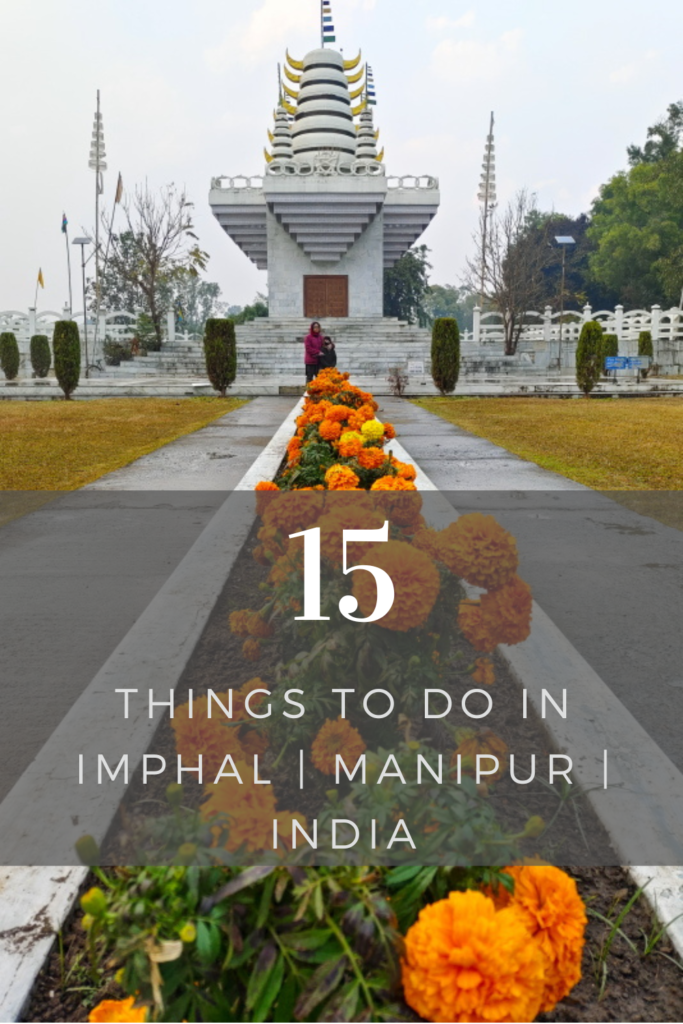
Table of Contents
About Imphal
Imphal is the capital of Manipur, a small state in northeast India. Apart from the scenic landscapes, Manipur has a glorious history, rich culture and affluent traditional heritage, making it a great place to explore. And Imphal being the capital, is the epicentre of major attractions.
Imphal is located in a large valley surrounded by nine ranges of hills. The average altitude of Imphal valley is 2500 feet. That helps Imphal to enjoy a temperate climate – a warm, humid summer and a dry, cold winter. The Imphal valley is divided into two districts – Imphal West and Imphal East. Imphal West comprises most of Imphal city while Imphal East district is more about the countryside.
The history of Imphal is as old as 3100 BC, when the ancient game of polo (sagol kangjei) was invented. As per Meitei literature, the kings in Manipur started their rule in 33 CE (Ninthouja Dynasty) and continued it from Kangla Fort until 1891, when it became a princely state after the Anglo-Manipur War in British-ruled India. The state of Manipur was incorporated into India as a union territory in 1956 when Maharaja Bodhachandra signed a treaty of Accession. Finally, in 1972, Manipur was made a full-fledged state.
The word Manipur literally means “abundance of jewels”. And there is no doubt that Imphal is an exquisite jewel that Manipur possesses.

How to reach
Imphal can be reached by air from other cities in India. Direct flights are available from major cities like Kolkata and Guwahati. Imphal International Airport, formerly known as Tulihal International Airport and renamed Bir Tikendrajit International Airport, is 8 km away from the centre of the town.
The only railway station in Manipur is in Jiribam, at the westernmost border of the state. Jiribam is close to Silchar in Assam, A passenger train runs between Silchar and Jiribam, and in 2022 a Janshatabdi Express runs between Agartala and Jiribam that goes via Silchar. A future rail network has already been commissioned to connect Jiribam with Imphal.
The other close railway station to Imphal is Dimapur in Nagaland. Dimapur is a 7-hour drive from Imphal. Although Jiribam, compared to Dimapur, is closer to Imphal, the road connectivity is better with Dimapur (Dimapur-Imphal highway or NH 39) that goes via Kohima.
An inner line permit is necessary to enter Manipur. The permit can be obtained online or from any three entry points in the state – Imphal, Mao, and Jiribam.
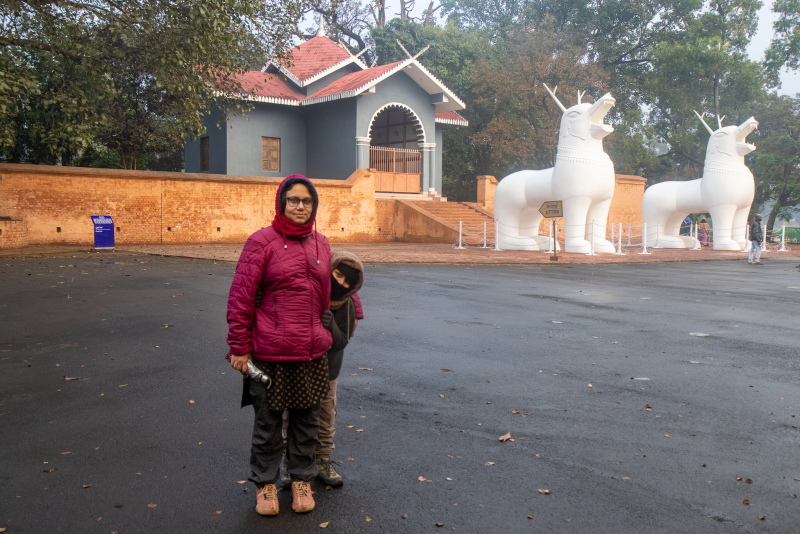
Where to stay
Imphal has many hotels and homestays to accommodate visitors as per their budget. We stayed in Hotel Imphal, which is run by Classic Group of Hotels. This hotel is a 3-star property and is close to Kangla Fort. Some other good options are Hotel Sangai Continental and Classic Grande Imphal.
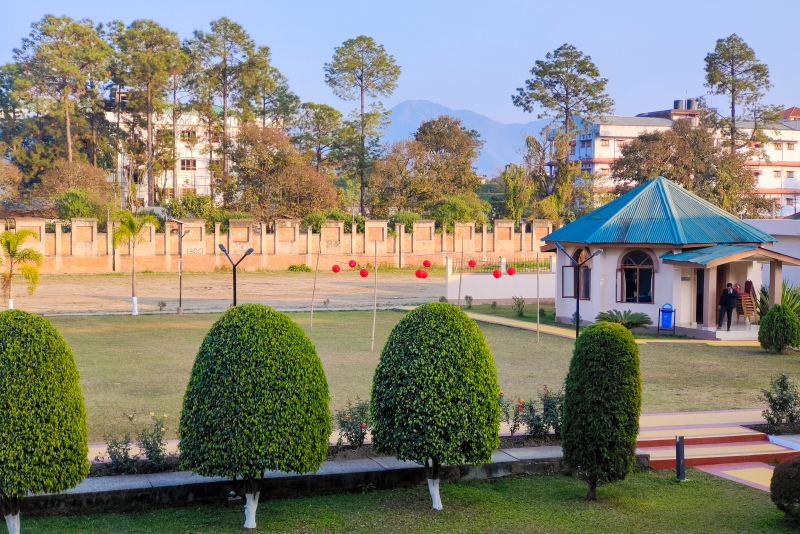
Things to do in Imphal
Explore the Kangla Fort
Kangla Fort, or Kangla Palace, is located at the centre of the city and is the main attraction of Imphal. Kangla is the oldest part of the town, with an ancient history of 33 AD. The ancient city was based on both sides of the Imphal. At present, only the western part remains. The Meitei rulers constructed a fort inside from where they used to rule the region. After the decisive Anglo-Manipur war in 1891, the British took control of Kangla, and the Assam Riffles made a base here. After Independence, Assam Riffles had their base inside Kangla Fort until 2004, when the government of India gave control to the state government.
The present-day Kangla Fort is a large complex surrounded by an outer moat. Once you enter through the western gate, the entrance gate for tourists, you will come across the ticket counter and the Information Centre, from where you can take a guide and book a buggy to travel inside the complex. One will come across the old citadel wall (only ruins of the old fort destroyed by the British), the old Govindjee Temple (ruins), the Pakhangba shrine, the Kangla Museum, the Kanglasha (dragon), Smadhis of King Bodhachandra and King Narashing, the old Polo ground, British bungalows, General Slim’s cottage etc.
Entry Time: 8 am – 4 pm (Monday closed)
Entry fee: ₹10 per person, for battery operated car – fee is ₹100 per person
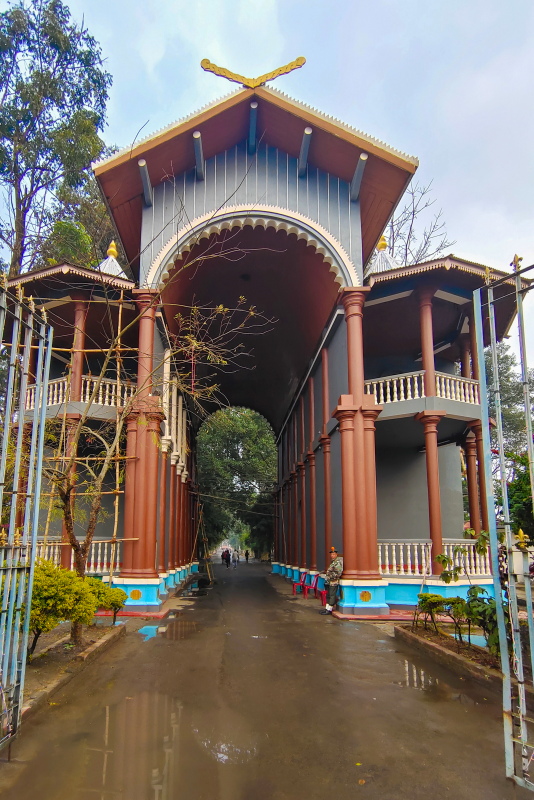
Go for a boat safari in the Keibul Lamjao National Park
Keibul Lamjao National Park is the only floating national park in the world. It is located near Moirang town, south of Imphal, an hour’s drive. This national park is stretched over an area of 42 square km, of which 26 square km is floating on the water of Loktak Lake. The phumdis that floating masses coalesced together in a vast grassland area that many wild animals inhabit.
The centre attraction of this national park is the Sangai Deer, also known as the dancing deer. Sangai deer is the state animal of Manipur. The reference to Sangai Deer is deeply rooted in Manipur’s literature, arts and culture. Other animals found in Keibul Lamjao National Park are wild boar, wild cats, spotted deer, bears, hoolock gibbons etc. May migratory birds can be found here during winter.
Entry time: 10 am – 6 pm
Entry fee: Adult/Children/Foreigner – ₹30/₹15/₹200

Reminisce on the glorious history of INA and its commander
Indian National Army, also known as Azad Hind Fauz, entered India in 1945 through the borders of Manipur and Nagaland, crossing the Indo-Burma border. And on 15th April 1945, INA colonel Shaukat Ali Malik hoisted the first Indian tricolour flag in Moirang in front of the old Moirang Kangla. There is a museum today at the same site known as INA Martyr’s Museum Complex, where one can learn more about the INA and its supreme commander Subhash Chandra Bose.
The only INA headquarters in India is also in Moirang, a must-visit place if you are in Manipur. It was the residential property of the family of H Nilmani Singh, a local who joined INA. The traditional Manipuri hut bears the brunt of machine gun tides and bomb splinters on its door and roof.
Entry time: 10 am – 4 pm (Saturday and Monday closed)
Entry fee: Adult / Children / Foreigner – ₹5/₹10/₹50
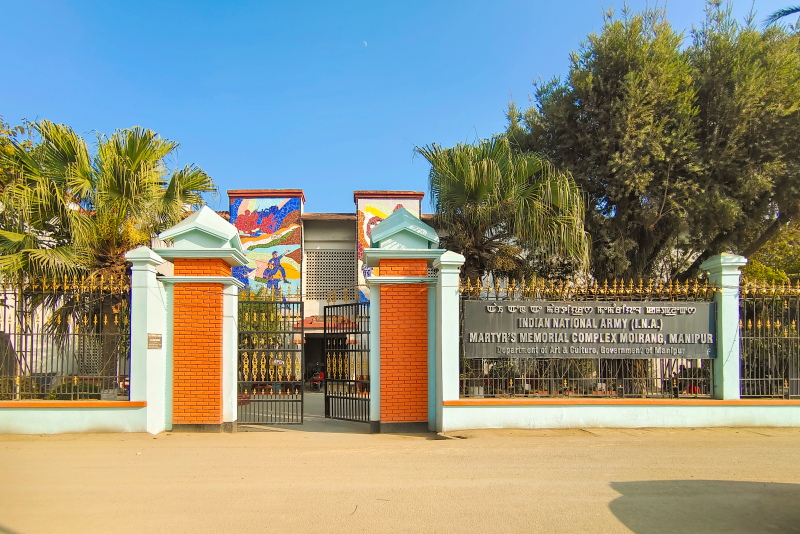
Stop at Karang Island while boating on Loktak Lake
Loktak Lake is a freshwater lake in Manipur. It is the largest freshwater lake in northeast India. This lake is famous for phumdis – a unique floating mass that is essentially a heterogenous mass of vegetation, soil and organic matter at various stages of decomposition. Keibul Lamjao National Park is on the southeastern side of this lake, floating on phumdis, making it the largest floating national park in the world. But to feel the life on Loktak Lake, one must visit the other side of the Loktak Lake, where villages are located on the bank of the lake.
Apart from boating on the clear water of Loktak Lake, you should also stop at Karang Island. Karang Island is the largest island inside Loktak Lake, where people have lived for decades and communicate with the mainland by boat. Once you deboard from the motorised boat at the jetty at Karang Island, you will come across tea shops and stationery shops nearby.
Once you walk towards the hilltop, you will see village houses on higher slopes. A hospital is on the hilltop, while a temple is at the village’s centre. Farmlands on the low ground near the lake are full of green vegetables during winter. In monsoons, these lowlands often get drowned in rising lake water. A newly opened homestay near the jetty at Karang Island can give you a different experience of staying on a lake island.
Interesting fact: Karang Island is declared the first cashless island in India
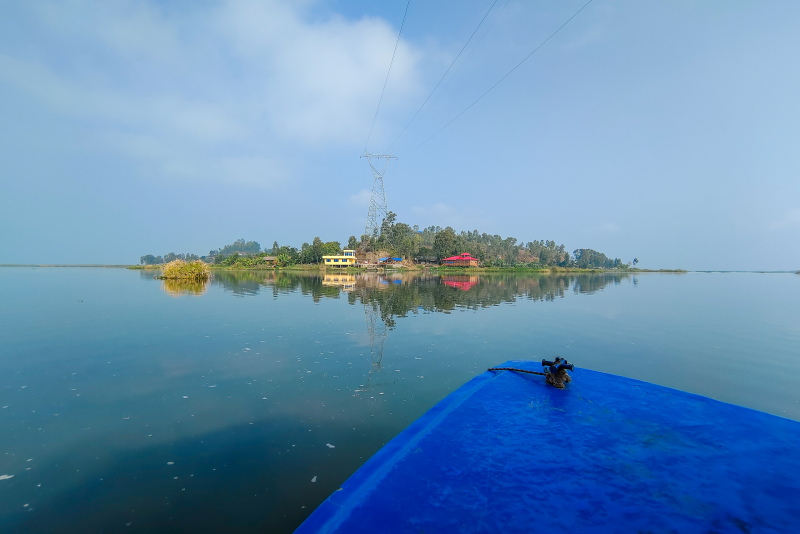
Pray for the departed souls at the Imphal war cemetery.
Like the Kohima war cemetery, Imphal also has a 2nd world war cemetery with the burials of more than 1600 commonwealth soldiers, and nearly 140 bodies remain unidentified. Most of the soldiers resting here are British. Another cemetery nearby has the graves of Indian soldiers and a memorial for the cremated Hindu and Sikh soldiers. The cemetery was constructed in 1945 during the war when 500 graves were there. Later remains of another 1000 soldiers were brought here. The cemetery’s design is like a Mughal garden using geometry and water to create a calm reflection. Commission architect Colin St Claire Oakes designed it.
Imphal witnessed a fierce battle between the British and Indian soldiers with the Japanese and INA soldiers that lasted for nearly five months, from March 1944 to July 1944, when the Japanese soldiers started retreating towards Burma due to a shortage of supplies. It is estimated that nearly 16000 Commonwealth soldiers died or were wounded during this brutal combat. Each grave has a tombstone with the name of the fallen engraved.
Entry time:10 am – 5 pm
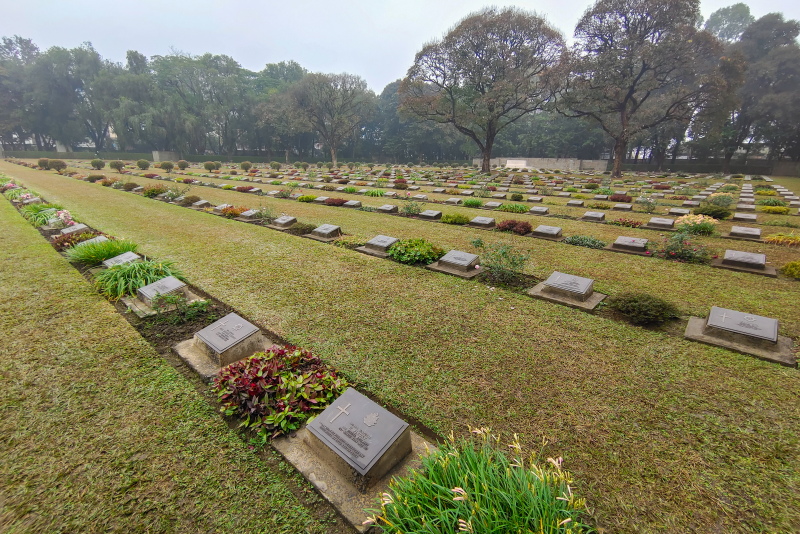
Learn more about Manipur’s history, tradition, culture and people at Manipur State Museum
Manipur State Museum in Imphal has a large collection of historical, cultural and artistic artefacts and relics. This museum was inaugurated by ex-Pri-Minister Indira Gandhi in 1969. The most visited exhibit is Hyang Hiren, a traditional royal boat used by the royal family. There is also a royal Howdah on display used by Maharaja Churachandra Singh. The costumes, weapons, and polo gear used by the royal family are also on display. The traditional ornaments, agricultural equipment, hunting tools, headgear, pieces of pottery, Meitei costumes, and utensils are also on display. There is a collection of portraits of Manipur’s former rulers who ruled from the seat in Kangla Palace.
Entry time: 10 am – 4:30 pm
Entry fee: adult/children/foreigner – ₹10/₹5/₹50
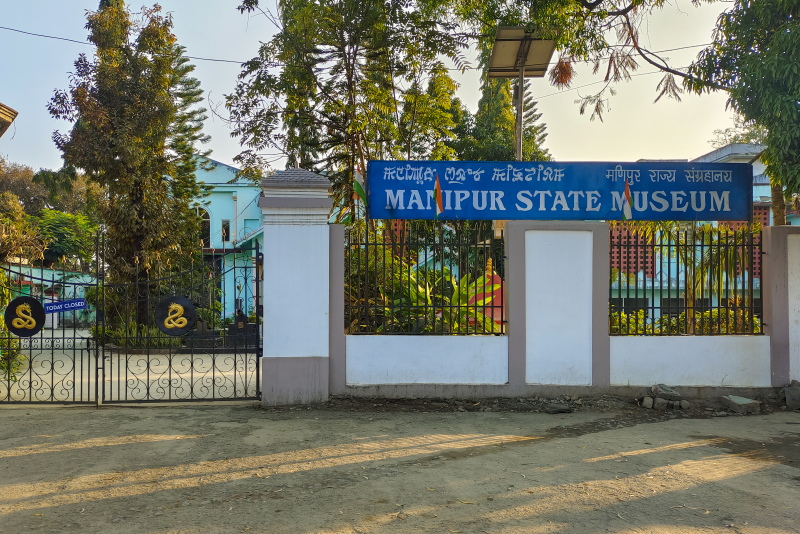
Take a photo of the world’s oldest polo ground
Polo, a game played on horseback, popularly known as hockey on horseback, actually originated in Manipur. Sagol Kangjei is the name of the traditional sport that Manipuris have played for millenniums. Although the British are credited for introducing this sport to the world, it was initially a game that Manipuri kings played and patronized since 33AD. Manipuris believed that the game originated from the deity king Kangba almost 1400BC.
Captain Robert Stewart from East India Cavalry played a game of Polo in 1853 with the locals in Silchar in Assam. He immediately fell in love with the game, and with other Britishers’ assistance, he set up the sector’s first polo club in India in 1859. The name of the club was Silchar Kangjei Club. Soon after that, the sport reached England. In 1869, the original polo suit of England was held at Hounslow Heath in London. Polo is now played in approximately 70 countries around the sector.
Interesting fact: Every year, an international polo tournament is held at Imphal Polo Ground (Mapal Kangjeibung) during the Sangai Festival, the last week of November.
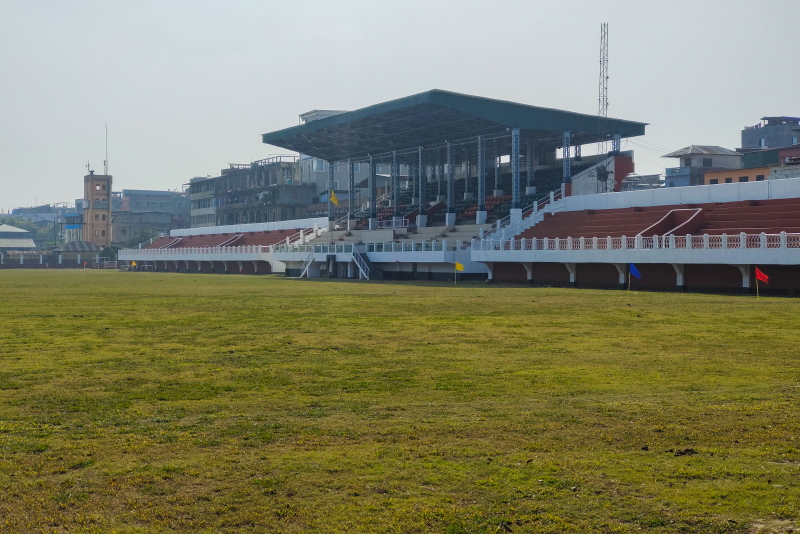
See the evening aarti in Govindji Temple
Shri Govindji Temple is a Hindu temple dedicated to Radha-Krishna. Maharaja Nara Singh built the original temple in 1846, but it was damaged during an earthquake in 1868. The temple was again rebuilt in its original design by Maharaja Chandrakriti Singh a decade later.
The present-day temple in front of the new palace is elegant in design, with large gold-plated domes. There is a raised mandapa where devotees sit and see the aarti. The central chamber, or the garbhagriha has Lord Krishna and Radha deities. The other two chambers on either side of the main altar are dedicated to Krishna and Balarama on one side and Jagannath, Subhadra and Balabhadra on the other side.
Every year Janmashtami and Rathyatra are celebrated here. In Kartik Purnima and Basant Purnima Raslila, a traditional dance is performed on the temple premises.
Entry time: 5:30 am – 1:30 pm and 4 pm – 8:30 pm
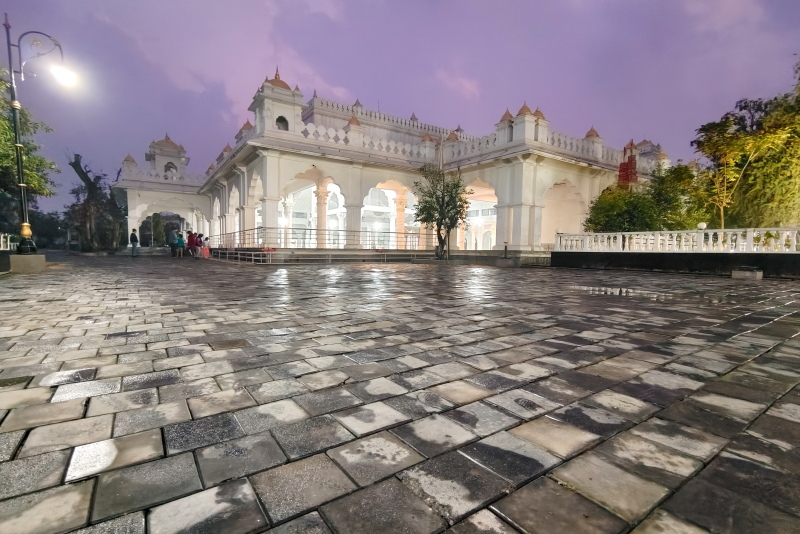
Go to Andro Heritage Village and learn about Coil Pottery.
Andro is 25 kilometres east of Imphal. It is a tribal village primarily inhabited by the Lois community. The village is famous for coil pottery work or Charai Taba. The married women of the community are expert craftswomen. They make various kinds of pots that are used in regular household work and religious festivals or rituals. The speciality of coil pottery is that no mould or wheel is used to make the pots. Here the clay is lengthened like a coil or loop, and then multiple coils of various sizes are stacked one above another to give the shape of a pot.

Enjoy the spectacular view of Imphal Valley from Cheirao Ching
Cheirao Ching is the twin peak at the centre of Imphal Valley. The panoramic view of the valley from the peaks is spectacular. There are two watch towers with an adjacent small temple that are pretty popular among locals who gather there on weekends to spend some time together. In the morning, the runners and morning walkers climb the stairs towards the watchtowers.
Cheirao Ching Kaba is a part of the new year celebration in Manipur called the Cheiraoba festival. It is celebrated during the month of March-April. Locals believe that climbing a mountain on that day is a good omen.

Know more about the Battle of Imphal at the Imphal Peace Museum
Red Hill, or Maibam Lokpa Ching, is where a fierce battle between British and Japanese soldiers occurred during World War II. It is at Nambol in Bishnupur district in Manipur. Imphal Peace Museum is located at the base of Red Hill. It was inaugurated in 2019 on the 75th anniversary of the Battle of Imphal. In 2019 Imphal Peace Museum won the beast design award in India for its creative interior design.
There are three sections inside Imphal War Museum apart from a conference hall and a souvenir shop. The first section features a timeline of the Battle of Imphal. The names of the casualties are mentioned here. Exhibits of the soldiers’ uniforms, war equipment and weapons used by them are also shown here. The second section shows Manipur after the second world war. Early television sets, photographs, and cameras are shown here. The third section shows the art and culture of Manipur, including pictorial biography of famous Manipuri personalities.
Entry time: 10 am – 5 pm (Monday closed)
Entry fee: ₹70
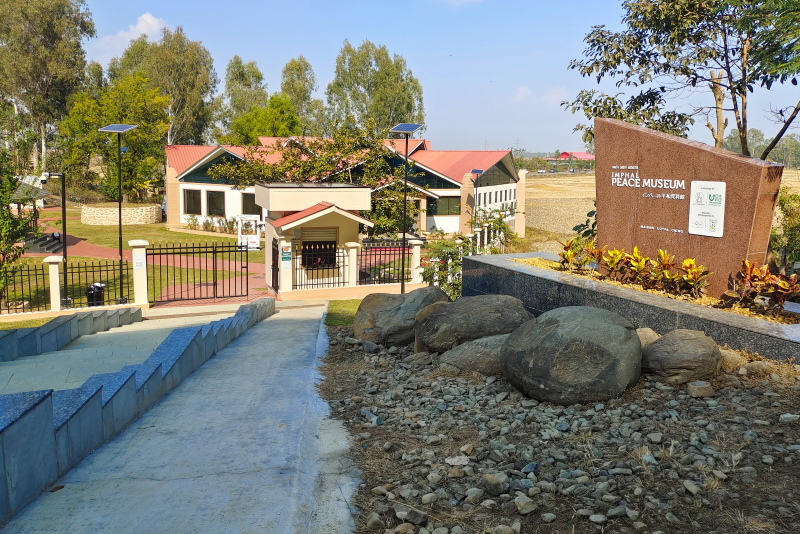
Relive the history of the Anglo-Manipur War at the Khongjom War Memorial
Khongjom War Memorial is dedicated to the Anglo-Manipur war that happened in 1891. It is situated at Khongjom in Thoubal district in Manipur. Khongjom War had a pivotal role in the Anglo-Manipur War. It was fought on 23rd April 1891. This day is celebrated in Manipur as Khongjom Day. The monument is a statue of three giant swords to portray the bravery of the Manipuri soldiers in the war,
Entry time: 6 am – 6 pm
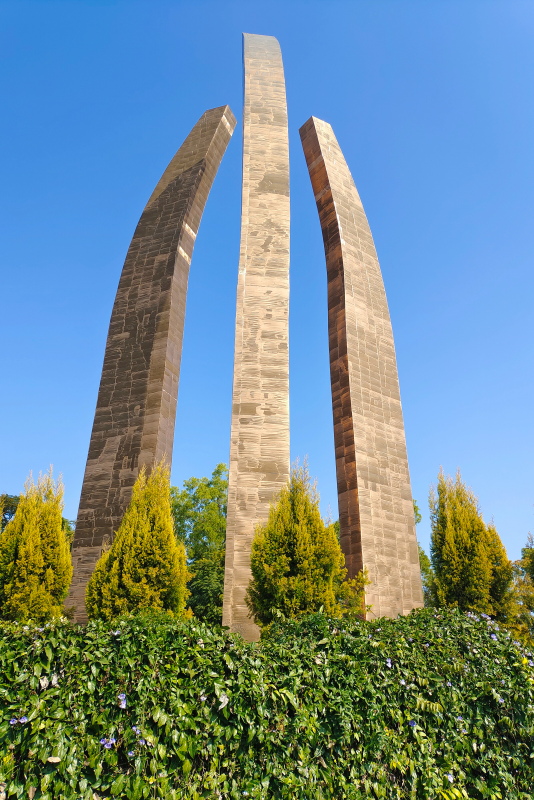
Appreciate the largest painting exhibition by one man in the RKCS art gallery.
Rajkumar Chandrajit Sana Singh (RKCS) belonged to an artist family. His father and grandfather were artists too. He founded his little studio as RKCS Chitralaya in 1947, which was eventually converted into a full-fledged art gallery in 2003 by his son. Many precious paintings portray the glorious days of the kingdom, the war with the Burmese, the Anglo-Manipur war, the local religious festivals and the unique landscapes of Manipur.
The gallery is spread over two floors with numerous works of art. On the ground floor, you may be lucky enough to find RK Budhimanta, the son of RKCS, whom you will find busy painting a canvas. RKCS Art Gallery made it to the Limca Book of Records in 1994 for exhibiting the highest number of paintings by a single artist.
Entry time: 10 am – 4 pm (closed on holidays)
Entry fee: Nil. A practice of donation exists here. The minimum amount of donation is 100 per head.
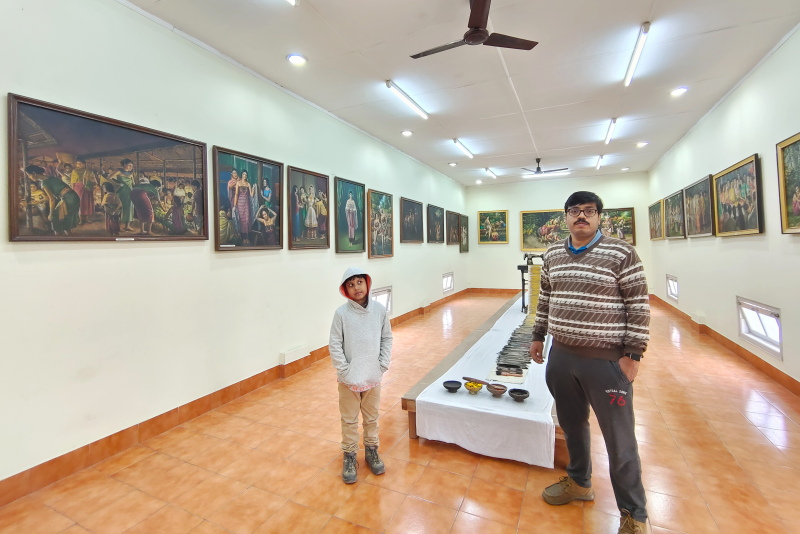
Shop in Ima Keithel – the all-mothers market
Ima Keithel, or the all-mothers market, is the oldest Manipur market still in existence. It started in the sixteenth century after lallup-kaba, the forced labour system, was enacted in the Manipur kingdom. As the male members of the family had to go to distant places for work or join the army after the imposition of this law, the women in every household came forward to cultivate lands or weave textiles and then sell the products in the market. Since then, Ima Keithel has started to exist in different places in Manipur. The one in Imphal is the largest all-women market in Asia.
The present-day Ima Keithel is located in Thangal Bazar in central Imphal, relocated from its original place. Now there are three large buildings with pagoda-like roofs. Each building is for different purposes. Like in one section, only fruits and vegetables are sold. On another daily groceries, utensils and other household items are sold. While in the third one, located on the other side of the road, textile products are sold. Visiting Ima Keithel in Imphal is an experience in itself.
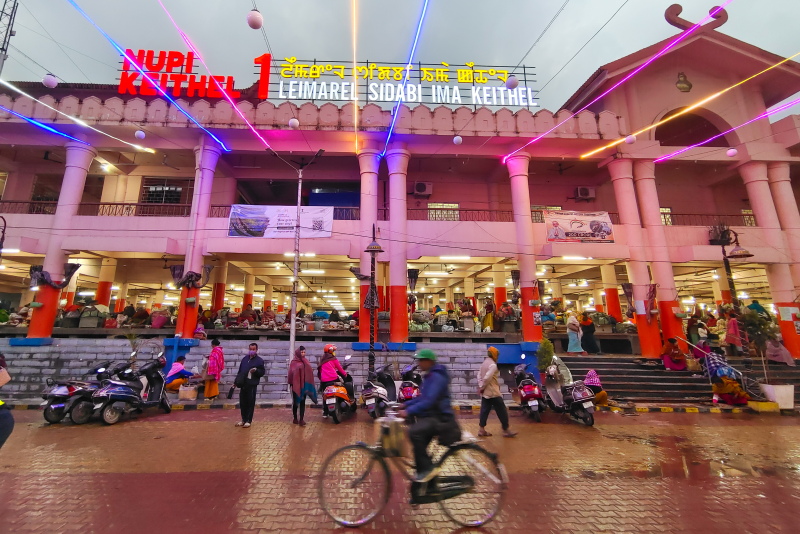
Eat authentic Manipuri cuisines
To complete the trip to Imphal, you must try the local Manipuri cuisines in Imphal. A typical Manipuri thali includes steamed rice (the staple food in Manipur), kangsoi (a vegetable stew with ngari), ooti (a thick curry made of green/yellow peas, chives and beans), nga Atoiba thongba (a curry made of fish), kanghou (stir-fried vegetables), eromba (a mash of boiled vegetables, ngari and chilli), singju (a salad made of seasonal vegetables) and morok metpa (a paste of roasted chillies, ngari and garlic). An exotic dessert called chakhao (a pudding made of black rice) completes the meal. Most dishes are prepared by boiling and steaming, although fries and fritters are eaten sparingly. Using aromatic herbs and roots is a characteristic feature of Manipuri cuisines.
Luxmi Kitchen, close to the Ima Keithel, is a popular place to taste authentic Manipuri food. As we found it closed during our stay, we ordered local Manipuri cuisine from our hotel in Hotel Imphal. The chef from Hotel Imphal prepared it all exclusively for us on a prior request. And I must say, it was delicious. It was a thali with 15 dishes, including fries, green vegetables, and fish (rohu) to enjoy with steamed rice and a couple of desserts at the end to sweeten our memories. Being Bengali, Manipuri foods seemed very close to the kind of food we are used to eating. The grand thali was not only a treat for the eyes but a delight for the tastebuds too.
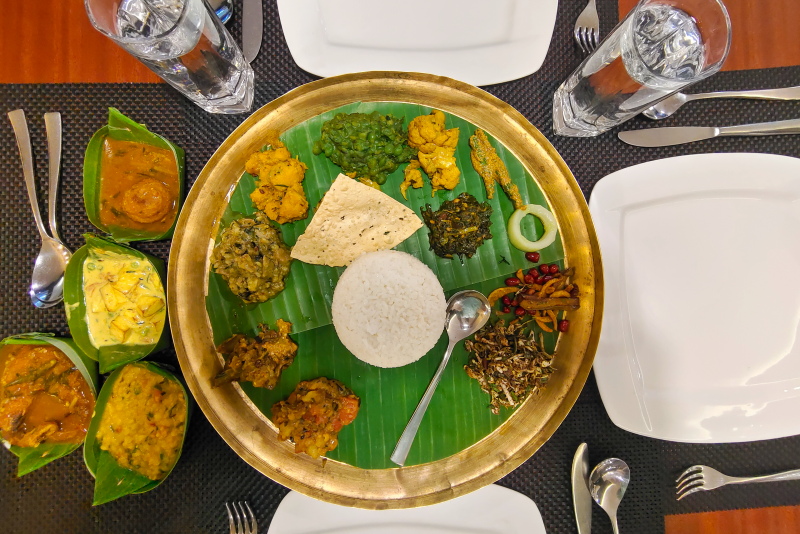
Book your trip: Resources
- Flight
Use Skyscanner or Google Flights to book your flight.
- Accommodation
Tripadvisor and Agoda are perfect for booking your hotel. If you want to stay in a hostel, then Hostelworld would greatly help you find one at your convenience.
- Travel Insurance
World Nomads is perfect for travel insurance. You can get comprehensive protection from them. Let them take care of unexpected situations while you concentrate on your trip.
- Package Tour and Activities
You can book a package tour from G-Adventures and Viator. They are a reputed company arranging small group tours and customising them per your requirements. You can also use Get Your Guide to book your private transport, city tours, heritage walks, food walks and other experiences like a cooking lesson or a Yoga session.
Disclosure: Some of the links below are affiliate links. You will be directed to another third-party website when you click those links. If you purchase anything via those links, I will earn a referral bonus without any extra cost to you.
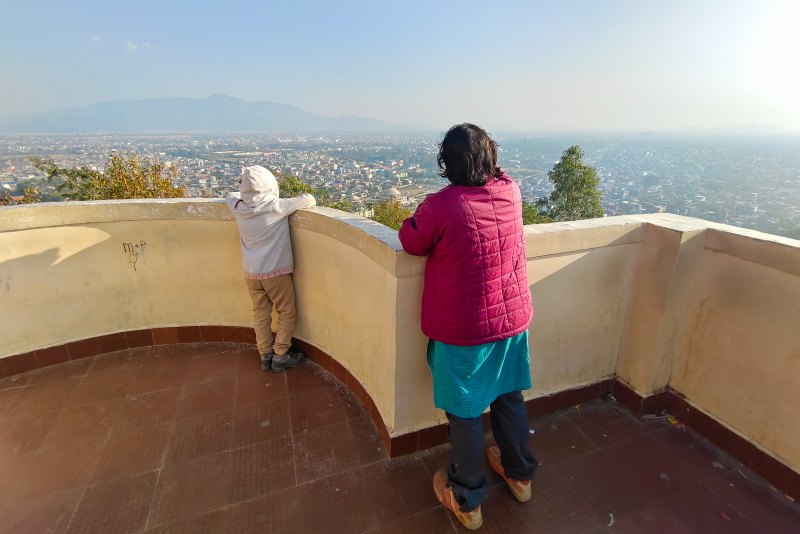

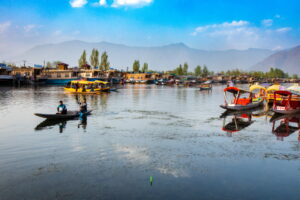
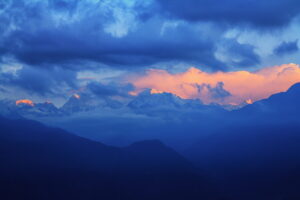
Pingback: A trek to Shirui Hill near Ukhrul in Manipur - My Travel Frames